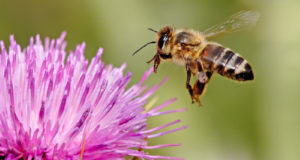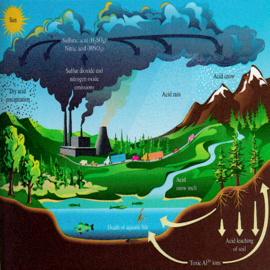
If you are a professional scientist interested in astrobiology (exobiology), searching for life in the Universe, your mantra is “follow the water”. If you want to find life, find liquid water first. But liquid water isn’t the total be-all-and-end-all when it comes to finding LGM – Little Green Microbes. Water, based on Planet Earth’s own terrestrial life as the only statistical sample we have, is certainly critical, but so to are lots of other things as we shall soon see.
Astronomy textbooks written until around or about the 1970’s gave little shrift to the Jovian system as an interesting place to look for extraterrestrial life. The Jovian planets and moons were obviously outside the solar system’s habitable or Goldilocks zone, of which Planet Earth was square in the middle of. My how times change, because, following our robotic exploration of the outer solar system, that point of view has had to partly fly out the window, at least with respect to three pieces of Jovian real estate – the moons Europa, plus Titan and Enceladus (orbiting Jupiter and Saturn respectively). Actually Titan is only really interesting from a pre-biotic perspective. While rich in organic molecules/compounds, it’s considered way too cold for really active chemistry and biochemistry to take place. Titan froze before life could actually grab hold. It lacks a viable energy supply, one of the key items required for life-as-we-know it.
Alas, the parent bodies, including those gas giants further out (Uranus and Neptune) continue to be overlooked as habitable abodes for ET. The logic of this escapes me as we shall soon see, for the idea that the Jovian planets could in theory harbour life forms as complex as jellyfish or other quasi-aquatic life forms even up to and including the equivalents of Jovian dolphins and whales can’t be ruled out. While Jovian extraterrestrial intelligence (ETI) might be possible, Jovian ETI with technology can pretty much be ruled out, and for much the same reason as to why dolphins and whales here on Earth aren’t a technological species – they can’t build things in the environment to which they have adapted to.
So what’s needed to build us an ET? Well, minimum requirements are 1) appropriate life-as-we-know-it chemicals (CHON – Carbon, Hydrogen, Oxygen and Nitrogen – and of course water or water vapour); 2) a proper comfortable environment for life-as-we-know-it (an appropriate temperature range for liquid water or water vapour); 3) mixing that brings the various inorganic and organic chemicals required into proximity; and 4) an energy source(s) to drive things along, like solar energy does for many terrestrial organisms on Earth.
Mars, though not part of the Jovian system, has been associated with extraterrestrial life for over the past century and then some. That association remains to this very day. Mars is still the poster-boy and remains the prime target in the hunt for ET – even though that association has suffered a downgrade from Martians with ray-guns (as in “The War of the Worlds”) to Martians as microbes – though a microbial ET is just as significant a discovery as a Martian pointing a ray-gun at you. The principle is the same; otherwise it’s just a matter of relative biological complexity.
Europa (Moon of Jupiter): Science fiction writers can sometimes really hit the proverbial nail on the proverbial head. Take Arthur C. Clarke’s “2010: Odyssey Two” (1982) and “2061: Odyssey Three (1988). Clarke had aliens taking an interest in the primitive life forms under Europa’s ice. They transform Jupiter into a star to kick-start their evolution. Fifty years later, Europa has become a tropical ocean world from which humans are banned. Well, the aliens, transforming Jupiter and the tropical ocean are flights of fancy, but the primitive life under the ice of Europa might be something else yet again.
Actually Clarke was tipped off by the two Voyager space probe flybys in 1979. The data and images that were captured strongly suggested to scientists that Europa had to have a salty ocean, perhaps a hundred kilometers deep, but an ocean underneath a vast ice sheet, perhaps up to ten kilometers thick. The energy source was tidal friction, the endless to-and-fro tugging via gravity on the moon by Jupiter and Europa’s companion sister moons. The flexing heated up Europa’s interior, and as heat escaped upwards, melted the covering of ice. The freezing temperature of outer space (Europa has no atmosphere to speak of) freezes the surface which then insulates the heated ocean below from further freezing.
So, you have water, an energy source, mixing, and given the water is in a liquid form, you apparently have a suitable habitat for life-as-we-know-it, well sort of. There’s not going to be any photosynthesis, not that far out and sunlight is not going to be very effective in any event after penetrating kilometers of ice. Translated, the oceans of Europa are going to be pitch-black. The analogy with terrestrial biology is life in our marine hydrothermal vent communities – life driven by Earth’s interior heat and the venting of various chemicals from beneath the ocean floor, and chemosynthesis instead of photosynthesis. Europa’s interior composition mirrors the terrestrial rocky planets – iron and silicates and stuff like that. What is less certain is whether there are abundant sources of carbon and nitrogen.
The one really interesting feature we can see on Europa’s surface is numerous streaks of pinkish-red lines and markings. The source is probably upwelling of the waters below as the surface ice rotates and cracks, sort of like ice floes in our polar oceans. There are lots and lots of organics with pinkish-red colors, though organic chemistry doesn’t of necessity mean biochemistry. Still, perhaps examples of Europa’s life (probably microbial) lie as frozen fossils on the surface. That pinkish-red stuff would be prime material for sampling when and if a probe lands on Europa. In conclusion however, the C and the N in the CHON is the big question mark IMHO.
Enceladus (Moon of Saturn): Europa has competition in our local solar system’s ‘where are the aliens?’ extraterrestrial life debate. We move now from the fifth to the sixth ‘rock’ from the Sun. In 2005 the Cassini spacecraft performed several close flybys of the moon of Saturn, Enceladus, revealing a water-rich plume venting from the moon’s South Polar Region. This discovery, along with the presence of escaping internal heat and very few (if any) impact craters in the South Polar Region, suggests that Enceladus is geologically active today. The water vapor spewing from Enceladus’s surface would indicate the presence of liquid water immediately under the surface of the moon, which, using NASA’s mantra of “follow the water” might make it possible for Enceladus to support life. The presence of liquid water under the crust means there has to be an internal heat source. That heat source is actually sources, a combination of radioactive decay and tidal heating as tidal heating alone is not enough to explain the amount of heat required.
So the data from instruments on the Cassini spacecraft produced evidence of what’s now termed cryovolcanism – cold volcanism – where water and other volatiles comprise the ‘molten’ stuff that gets erupted from these cold ‘volcanoes’ instead of molten iron and silicate rock – like terrestrial lava that is erupted from our own hot volcanoes.
These cold volcanic eruptions – basically ejections of vapor clouds into space – have been, as noted above, discovered on Enceladus. The detailed composition of these gas clouds are in the main mostly water vapor, plus some other minor volatile components like molecular nitrogen, ammonia, methane, and carbon dioxide. Additional observations have revealed further chemicals in the plume, including both simple and complex hydrocarbons such as propane, ethane, and acetylene. These chemicals and their relative abundances are similar to those seen in many comets. Perhaps Enceladus was once a super-giant comet that got captured by Saturn’s gravity!
All up, these findings raise the possibility for the existence of potential life forms existing beneath the surface of Enceladus. The composition of the gas cloud plume strongly suggests that its source is a subsurface salty ocean or subsurface caverns filled with salty water. Enceladus is therefore a prime candidate for those wishing to investigate non-terrestrial sites harboring potential extraterrestrial life. We have CHON, energy sources, an appropriate temperature regime underneath the surface, and probable mixing, since liquid water facilitates mixing.
Titan (Moon of Saturn): I’ve already noted that while Titan is fascinating from an astrobiology point of view, that point of view is from those interested in pre-biotic organic chemistry that leads to biochemistry, not those hopeful of actually seeing things wiggle. Translated, while it has the CHON, and probably mixing, that’s just about it. The environment is way too cold which suggests that energy available to drive biology is in pretty short supply.
Now on to the major players! It’s time to introduce the main players, Jupiter, Saturn, Uranus and Neptune, and those four essentials: CHON, environment, mixing and energy. If there is life-as-we-know-it on these four planets, then we need CHON, we need a proper environment, we need mixing to bring essentials together at one time and place, and we need a source(s) of energy.
One clarification is in order first. Although the Jovian planets are usually called “gas giants”, that is a slight misnaming. While it’s true that relative to Mercury, Venus, Earth and Mars, the Jovian planets are indeed great big balls of gas, they still must have at their centre a solid rocky core, due to, if for no other reason, that over 4.5 billion years of their existence, asteroids, maybe even small planets, meteors, dust, and comets have all slammed into them. The rocky stuff, ultimately, must sink to the bottom forming a solid heavy element core. With that clarification made, let’s see what there is to be speculated upon.
Jupiter: CHON: Jupiter, a gas giant, is composed mainly of molecular hydrogen (the H in CHON) and helium (much like the Sun’s composition and in roughly the same ratios). There are certainly ammonia (probably as ice crystals) and ammonia compounds (like ammonium hydrosulphide) in the atmosphere, adding nitrogen (the N in CHON) to the mix. Methane (which contains the C in CHON), as does the carbon contained in carbon dioxide and carbon monoxide are also present in the upper atmosphere. Water vapour (the O in CHON) is certainly present, even though in small proportions relative to hydrogen and helium. The colourful bands of latitude could easily be suggestive of complex, even organic chemistry involving not only CHON but sulphur and phosphorus and other trace elements. The upper atmosphere of Jupiter contains small amounts of simple hydrocarbons such as ethane and acetylene, which forms from methane under the influence of the Sun’s ultraviolet radiation and the highly charged particles incoming from the Jupiter’s magnetosphere.
Jupiter: Environment: There’s no disputing that the cloud tops are bitterly cold; the deep interior is way too hot. But, that alone suggests that there will be a Goldilocks area in-between, probably extending vertically for hundreds of kilometres, and extending as well horizontally around the globe. That volume, given Jupiter’s size, comprises a lot of Goldilocks territory.
Jupiter: Mixing: Since Jupiter has a very hot interior core and the top of the atmosphere is extremely cold, and since heat rises and cold descends, that alone suggests that mixing in Jupiter’s primarily gaseous/quasi-fluid body must take place. Quite apart from that, all one needs to do is view time-lapse photography of Jupiter’s upper atmosphere to see all the turbulent motion that takes place. A tranquil pond Jupiter isn’t.
Jupiter: Energy – Solar energy is highly unlikely to drive any Jovian biology because the atmosphere is very thick, and just like with our terrestrial oceans, things get very dark very quickly as one descends. However, chemical energy is a possibility, like that which drives terrestrial hydrothermal vent communities. Then there’s infrared (instead of visible) radiation. Jupiter radiates much more heat that it receives from the Sun, the heat being slowly radiated outward from Jupiter’s original quota of primordial heat energy largely stored in the core of the planet. Jupiter is a fantastic place to visit if you’re fond of thunderstorms. Lightning really lights up the Jupiter’s skies. Lightning is a prime source of energy for driving chemical reactions. Translated, all up, Jupiter is awash with potentially useful energy sources to drive any local biology.
Saturn: CHON: The atmosphere of Saturn (which is what the mainly planet is – a ball of gas) consists of one hell of a lot of molecular hydrogen and some helium, a really skewed ratio relative to those elements found in the Sun, but that’s another story. However, it does explain why Saturn, if you could find a freshwater ‘pond’ large enough, would float in it! That aside, the atmosphere contains trace amounts of ammonia (there’s your nitrogen), acetylene, ethane and methane (and your carbon), plus phosphine – all have been detected. The upper atmosphere has clouds composed of ammonia crystals, while the lower atmospheric clouds appear to be composed of ammonium hydrosulfide and/or water (thus some oxygen).
Saturn: Environment: The same discussion that applies to Jupiter applies to Saturn, although because Saturn is a smaller planet (albeit massive relative to Earth) the habitable volume of Saturn’s quasi-liquid atmosphere will be somewhat less.
Saturn: Mixing: Saturn also has that hot interior, cold exterior dichotomy that exists in this gaseous/fluid planetary ball. It’s akin to the convection that occurs when you heat water on your stove. Hot water rises; cooler water descends. And while not as dramatic as time-lapse films of Jupiter’s atmosphere, it’s also obvious that Saturn’s visual ‘surface’ is anything but tranquil. In fact the winds on Saturn are among the highest of any planetary body in the solar system. However, being farther from the Sun, Saturn’s chemistry is not going to be quite as dramatic as closer-in Jupiter, and thus Saturn’s atmospheric ‘surface’ is a lot blander appearing.
Saturn: Energy – As is the case for Jupiter, and for much the same reason, solar energy (photosynthesis) is out on Saturn; chemical energy and infrared radiation (heat energy) will be the way to go. Saturn also radiates more heat that it receives from the Sun – two and a half times more in fact; Saturn is also a fantastic place to visit if you’re fond of thunderstorms. Lightning also lights up the skies of Saturn.
Uranus: CHON: Uranus is similar in atmospheric and chemical composition to Neptune (see below), but both are slightly different in their chemical composition than their larger gas giant sisters, Jupiter and Saturn. As such, astronomers sometimes place them in a separate category called the “ice giants” because these planets contain a lot of – wait for it – “ices” like water (the O in CHON), ammonia (the N in CHON), methane plus other hydrocarbons (your C and your H in CHON) that includes ethane, acetylene, methylacetylene, and diacetylene. In short, instead of say liquid water vapor, you have ice crystals. Uranus’s atmosphere is however similar to the “gas giants” in having the majority of its stuff consists of hydrogen and helium, hence followed by methane (there’s some more of your C). Even more C is present in carbon dioxide and carbon monoxide which has been detected. While carbon consists of only about 3% of the composition of Uranus, that’s still vastly more carbon relative to the solar percentage, so Uranus has been enriched in carbon.
Uranus: Environment: Uranus (as well as Neptune), are often refereed to as the “ice giants” instead of the “gas giants” as noted above. One other distinction is that relative to Jupiter and Saturn, Uranus (and Neptune) are way smaller in volume. That apart, the “ice giants” are way more akin to the “gas giants” than to any of the Jovian moons or any of the terrestrial planets for that matter, both in terms of composition and in terms of relative volume. While pretty god-awful from a human’s perspective, some hardy microbes might love to call Uranus home.
Uranus: Mixing: Any lump of gas molecules, or molecules in a liquid, almost by definition, isn’t going to sit still, unlike say the molecules in a lump of rock. A puff of smoke emitted into Earth’s atmosphere gets dispersed; a drop of ink plonked into a bowl of water will equally get dispersed, or mixed in and throughout. I’d expect nothing less in the non-solid soupy atmosphere of Uranus. In any event, wind speeds have been clocked at up to 900 km/hour – that’s pretty breezy!
Uranus: Energy: Uranus radiates just ever slightly more heat than it receives in the form of solar radiation. In case you think that makes Uranus frigid through-and-through, you’d be wrong. The interior core temperature still approaches over ten to twenty times the maximum temperature of your average home oven! So, while solar energy is just about zilch, energy percolating upwards nevertheless is present for utilization by the locals – if any. However, of all the four Jovian planets, Uranus is probably the least likely planet to have achieved the distinction of harbouring local (Uranian) life forms.
Neptune: CHON: Neptune’s atmosphere is mainly, as you’d expect one that consists mainly of hydrogen and helium, but with substantial amounts of water, ammonia and methane. CHON is present, as are various sulphide compounds.
Neptune: Environment: While the top of the atmosphere is very cold, as you’d expect being so far out from the Sun, the interior core is hot indeed – many thousands of degrees hot. Obviously, somewhere in-between, you’ll get a happy Goldilocks medium as far as biology is concerned.
Neptune: Mixing: Neptune has lots of varied weather and storm systems, all contributing to atmospheric mixing. The temperature differential between interior temperatures and the atmospheric ‘surface’ temperatures, like on Earth, will drive wind systems leading to mixing of the chemicals that make up the CHON-rich atmosphere
Neptune: Energy: Despite being farther away from the Sun than Uranus, Neptune radiates quite a bit more heat than it actually receives from Sol. In fact, slightly over two and a half times more heat. From the point of view of this analysis, the exact reason(s) aren’t overly relevant, just the fact that it does so. Of course being so very, very far away from the Sun there’s no chance in hell of photosynthesis; chemosynthesis is possible, even probable.
In conclusion, I suggest that the soupy atmospheres of the giant planets have all the fundamentals required not only for the origin of life, but long-term habitability for any biological organisms that have been and are being provided with appropriate CHON, a Goldilocks environment (at least in places), an energy supply, and mixing. The CHON box is ticked on all four Jovian planets. With respect to CHON, there are probably all sorts of way more complex organic molecules present in the four Jovian atmospheres but in such relatively small quantities that are dispersed widely and deeply so as to have escaped detection to date from our relatively faraway fly-by and orbiting probes. The habitable environment box on all four Jovian planets is also ticked; ditto the mixing box; and ditto the available energy supply box. You also have had over four and a half billion years for interesting biological happenings to have occurred. In addition, there’s a lot of volume in each of the Jovian planets for interesting stuff to happen in. The odds of things all coming and getting their act together in a small pond is small relative to a large ocean.
That all four Jovian planets have evolved life is problematical; that at least one has become a biological abode is much more certain, IMHO. Throw in one or more of their satellites like Europa and Enceladus that offer a liquid water ocean environment – well that’s a bonus. On top of all that, the Jovian planets have the highest gravities apart from the Sun. Now that means they suck in more than their fair share of other solar system debris – like comets and asteroids. Now comets and asteroids, the leftovers of that initial stuff out of which our solar system was made, also tend to be rich in CHON. No doubt they, via impacts with the Jovian planets, have contributed their CHON bit to the already potential suitability of those abodes as habitable abodes.
So what sort of Jovian life might we expect? On Planet Earth there is a sharp boundary between the atmosphere and the hydrosphere. On the four Jovian planets one just slowly merges into the other as one goes deeper and deeper. Terrestrial but airborne microbes, bacteria, germs, and other single-celled beasties, and their marine equivalents, like plankton and other unicellular critters, occupy both environments and are happy little campers. There’s no reason for there not to be Jovian equivalents that ‘swim’ and multiply in whatever region of the various four varieties of Jovian atmospheric ‘soups’ that have a comfortable, Goldilocks temperature regime. Of course that Goldilocks region could extend over hundreds of vertical kilometres in range. Some organisms might be better adapted to the thinner cooler upper regions; others to the murkier but warmer depths. Regardless, it gets dark fast so eyesight in the visible range of the electromagnetic spectrum might be problematical. Of course phosphoresce, not all that uncommon in marine life here on Earth, can’t be ruled out of course.
If simple life forms originated and evolved on Jupiter, Saturn, Uranus and/or Neptune, then more complex and far larger ‘marine’ and ‘aerial’ life forms might be present too. Their trick, in order to stay in the Goldilocks zone, will be to have evolved the capability to maintain neutral buoyancy, but also to be able to rise if turbulence pushed them downwards towards greater heat; be able to sink if currents push them too high where chill factors come into prominence. So ‘gas bag’ floaters or ‘fish’ with ‘airbags’ might be possible Jovian alien life-forms. There’s no reason such critters couldn’t have developed a relatively sophisticated degree of intelligence. It’s possible to have intelligence without the means of developing technology as our whales and dolphins and even the humble octopus demonstrate.
The fly in the ointment is that our on-site investigation is going to prove to be an extremely daunting technological task, one that most certainly won’t happen in the next several decades – probably much longer. In the short term, the best bet is to use remote spectroscopic analysis of the atmospheric ‘surfaces’ or actual surfaces (in the case of the satellites) to identify biological signatures – compounds that just cannot be accounted for by non-biological processes. An example would be the pinkish-red areas on Europa noted above.

Source by John Prytz
 Vitamin Agent The Health & Naturalistic Source
Vitamin Agent The Health & Naturalistic Source





